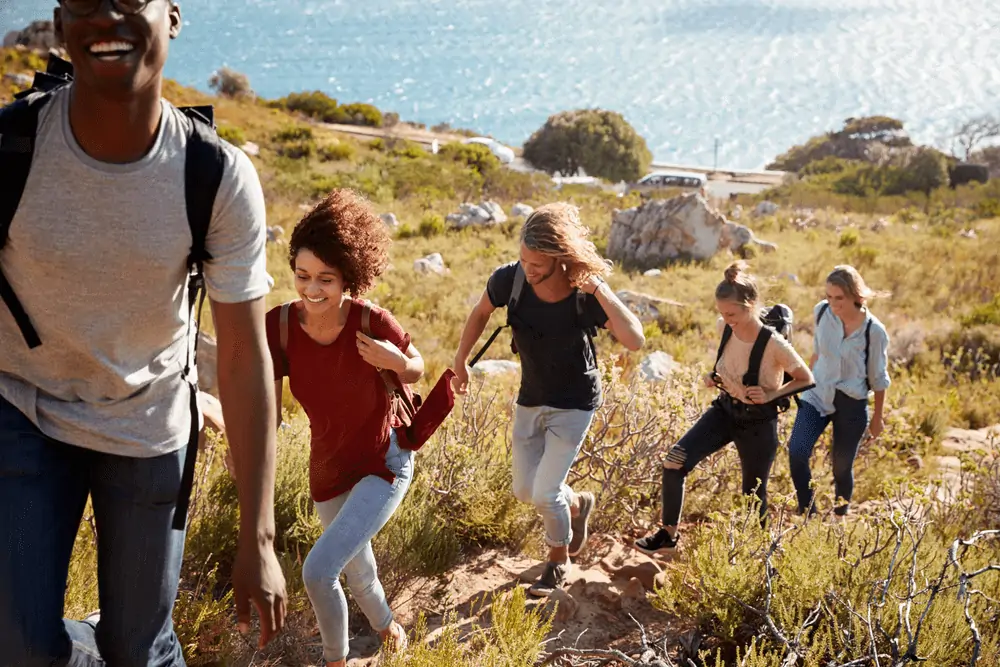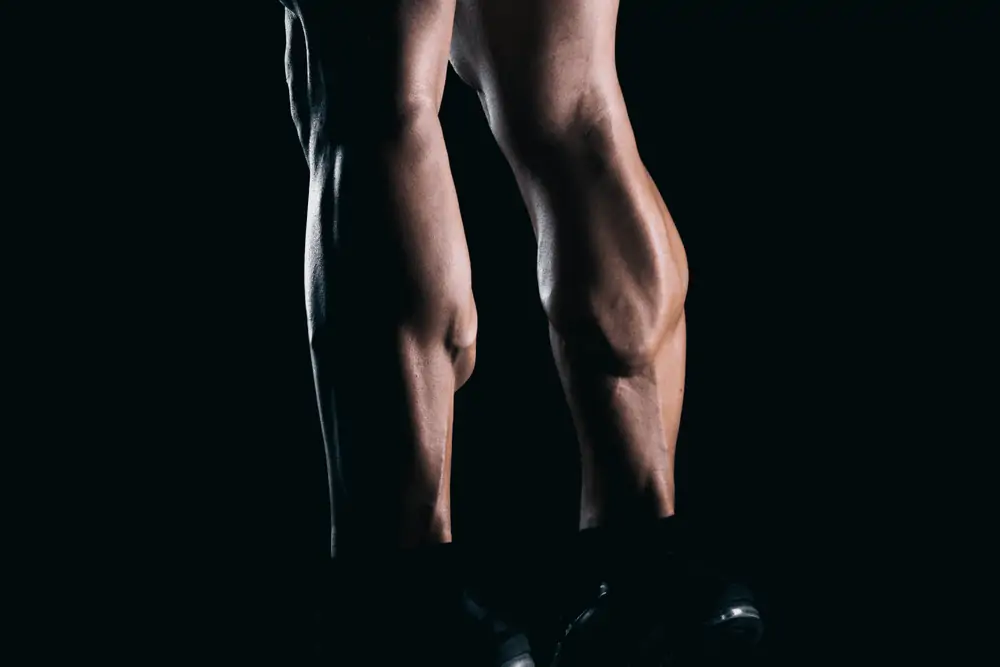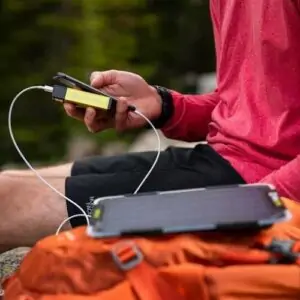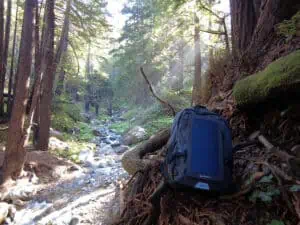Which Exercise Helps Prepare for Uphill Hiking?
Hiking is one of the most widespread outdoor activities in the world, with more than 21,000 miles of trails in the United States alone. To put it in perspective, the longest highway in the United States is only 3,102 miles long!
It is no wonder why we love to hike so much- hiking is one of the most beneficial forms of exercise out there, improving both our physical and mental wellbeing.
Whether you are a beginner or an expert, preparing for a hike requires some training beforehand. If you are wondering which exercise helps prepare for uphill hiking, keep reading for everything you need to know.

Health Benefits of Hiking
Hiking is an extremely rewarding outdoor activity. Not only is it fun for persons of all ages and skill levels, but it is great for physical and mental wellbeing. Hiking regularly is shown to help reduce the risk of a wide variety of medical conditions, from heart disease to anxiety.
The Center for Disease Control has shown that exercising is a critical component of combatting heart disease. The CDC’s extensive research suggests that persons who do not exercise are twice as likely to have coronary heart disease. Regular exercise can also combat hypertension, one of the most common heart conditions in the United States.
Weight-related health issues are also on the rise in the United States. Diabetes and obesity are both increasing in Americans. Regular exercise is one of the best ways to combat these health concerns.
Regular exercise can also help improve mental health concerns. Walking has been shown to significantly reduce feelings of anxiety and tension. Stress relief through exercise is great for overall wellbeing.
The best part about hiking is that is an exercise that is accessible to almost any age, ability, and budget. Hiking is low-impact, so it is a good beginner’s exercise.
Hiking can be great for all skill levels, from easier trails for beginners up to extremely treacherous terrain for experts. Reaching the top of an incline or the peak of a mountain is very rewarding, no matter where you are hiking.
What Muscles Get Worked Out While on an Uphill Hike?
Uphill hiking is an amazing exercise for pretty much the entire leg. Between the hike up and the hike down, you are almost guaranteed to work all the muscles in your legs. Because hiking can put some strain on your legs, it is important to train every muscle before embarking on a long uphill hike.
The Glutes
The glutes are the collective nickname given to the three muscles that make up your butt, the gluteus minimus, the gluteus medius, and the gluteus maximus. They are responsible for the rotation of the hips, posture, and balance, and help to stabilize the pelvis, knees, and ankles.
The glutes are very important for uphill walks. The glutes do not engage as much when walking on flat ground, but they do play a larger role when walking uphill, so it is essential that they are trained up and ready to go.
The Quadriceps
The quadriceps, more commonly referred to as the “quads”, are a group of muscles that work together at the front of the thigh. Though the name suggests four different muscles, there are actually five- rectus femoris, vastus lateralis, vastus medialis, tensor of the vastus intermedius, and the vastus intermedius.
The quads are an essential muscle for hiking and walking in general. They flex the hip, assist with balance and posture, help move the knee, and absorb the force of your heel as you walk. The quads play a critical role in the way you walk, uphill or otherwise.
The Hamstrings
On the other side of the thighs is a group of 3 muscles known collectively as the hamstrings. The three muscles, the biceps femoris, the semimembranosus, and the semitendinosus, work together to bend your needs and move your hips.
The most critical function of the hamstrings is to move the knees. When on an uphill hike, the knees bend more than when on flat ground, so it is very important to train these muscles before going on your hike.
The Calves
There are two muscles that make up your calves, the gastrocnemius and the soleus. The gastrocnemius connects the knee joint to the ankle joint, whereas the soleus the tibia, and the fibula.
These two muscles work together to help you run, walk, and jump. These muscles help you to stand, rotate your ankles and move.
As such, your calves will be essential pieces of equipment for your uphill hike. Straining these muscles during your hike will lead to a very uncomfortable walk back down.
Preventing Injury
Most hiking-related injuries result from being ill-prepared for the hike, either from inappropriate gear or from not having adequately trained.
Two of the most common traps new hikers fall into are picking the wrong socks and buying brand new boots right before leaving. The wrong socks will hold moisture, under or overheat your feet, and increase the chance of blisters. Hiking boots that aren’t broken in will be a first-class ticket to blisters and pain.
Even with the right gear, it is important to be physically ready for the hike of your choosing. There are hiking trails available for all skill levels, but if you are brand new to hiking, you will probably not enjoy a challenging trail without exercising beforehand.
If you are getting ready to embark on a challenging hike, it is essential to train and exercise beforehand. Fortunately, there are many exercises for hikes that are great for preparing for your next trip.
Which Exercise Helps Prepare for Uphill Hiking?
Preparing for a hiking trip should include a blend of cardio and strength training. Cardio will help boost your endurance, while strength training will help you scale the hill. Depending on what types of hiking you are planning to try, there are a few different exercises that you can do at home or in the gym.
Cardio Exercises
No matter your fitness level, a variety of cardio workout options are available. If you have access to a gym, the machines there can significantly affect how you prepare for a hike. If you use a treadmill, take advantage of the incline.
Start with walking uphill for 30 minutes straight or more. You can also incorporate intervals of jogging and walking while on the incline to intensify the workout.
Stairclimbers are amazing for exercising all of the muscles in your legs. They work like an infinite staircase, strengthening your glutes and quads. Stairclimbers help simulate the feeling of an uphill walk, helping you feel prepared for the real thing.
If you do not have access to a gym, you can still replicate these exercises at home! Try to find a hill with an incline you can walk on nearby, or take long jogs to boost your endurance. If you have a staircase at your home or in your apartment building, try walking up and down as many times as you can to strengthen those leg muscles.
If you don’t have access to a staircase or running paths, a good walk through your neighborhood is still very beneficial exercise. Walks help to keep your heart pumping and help to ease stress. If all else fails, you can even just walk back and forth across your home for a quick and easy at-home boost.
Strength Training
There are so many different strength routines to try out! Try to find routines that help build muscle in your legs when preparing for a hike.
Squats
One great exercise that many of us have done is squats. With your feet shoulder-width apart, you will simulate the motion of sitting down and getting back up. Your weight should stay in your heels, and your posture should stay neutral.
Once you master the form of a squat, you can try incorporating weight. Holding a dumbbell with two hands, keep the dumbbell centered near your chest and complete your squat (this is sometimes called a goblet squat). Alternatively, you can hold two dumbbells and hold them at your sides while you squat.
Another variation of squats is elevated split squats. Similar to a lunge in style, the elevated split squat props one foot up on a bench behind you. Then, you squat on the ground as low as you can go.
Jump squats work both your strength and your endurance. Follow the form of a traditional squat, but rather than standing up, push through the squat and jump up. These squats are great for increasing your heart rate while working through strength circuits.
Calf Raises

A calf raise is another simple exercise that is great for prepping for a hike. Simply stand up straight, then slowly shift your weight to the ball of your feet so your heel is elevated off the ground. You are sure to feel this in your calves.
To elevate the calf raises, try standing on a slightly elevated surface, such as a step so that your heels do not touch the ground between reps. Adding weight will also up the pressure. These muscles will help support your ankles and lower legs while on your hike.
Lunges
Lunges are great for working a variety of leg muscles. They are one of the best lower-body exercises out there, working your glutes, thighs, and calves simultaneously.
Beginning in a standing position, take a wide step forward and bend your knee towards the ground. You should have a nice 90º angle in both legs. Be sure to keep your core strong and your posture correct- keeping your hands on your hips throughout the motion can make it easier to feel the right stance.
Alternate sides and try to get nice and low to the floor. For a slight modification, try stepping backward instead of forwards. Reverse lunges help challenge your balance while improving leg strength.
Deadlifts
Deadlifts are a bit tricky to master, but they are great for working the backsides of your legs and strengthening your back.
With dumbbells in each hand or a bar, stand at a slightly bent position, knees slightly bend and back straight. Slowly hinge at the hips and bring the weights down your legs and then back up.
The key is to keep your upper body as still as possible- you do not want to be reaching with your arms, you want your body to hinge and reach without losing your posture. You will want to feel like your shoulders are together as if you could hold a pen in place between your shoulder blades throughout the movement.
Group Fitness
If you have the time and dedication to take a fitness class, group fitness classes can help prepare you for your walk while teaching you proper form. Group fitness classes such as OrangeTheory or CrossFit are great for working the entire body through a combination of endurance and strength training.
Classes like these may not be cheap, but they do help jumpstart your fitness journey and help to teach proper form!
Preparing for Uphill Hiking
Hiking is one of the most beneficial forms of exercise out there, and the reward of reaching your goals makes the training worthwhile. Preparing for a hiking trip successfully involves a blend of cardio and strength, working the lower body muscles.
Now that you know more about which exercise helps prepare for uphill hiking, all that is left is to plan your fitness routine and start your training today. For more great information about planning a hiking trip, check out our hiking information center.






